03 October 2013
LENSES
WHAT IS A LENS?
A lens is a piece of transparent material with one, or more usually both, sides curved such that light passing through it will bend in a specific way. A photographic lens almost invariably comprises a number of these to achieve a better image. These are known as compound lenses.
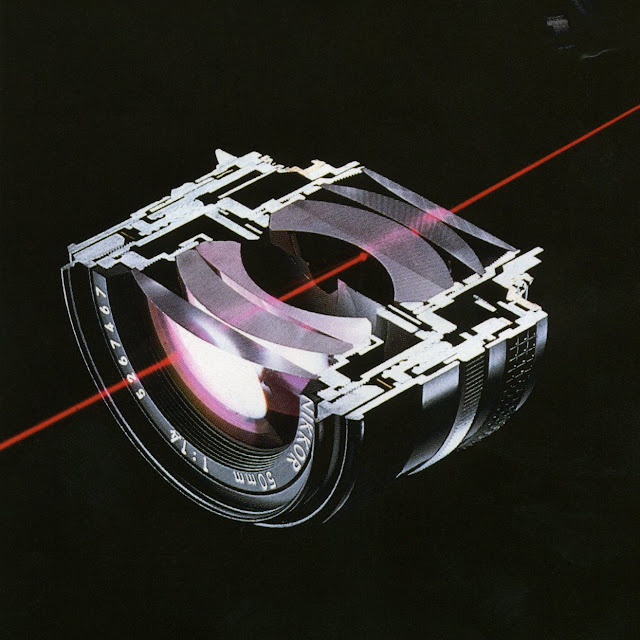
******************************************************************
Understanding Camera Lenses CLICK HERE.
******************************************************************
CAMERAS WITHOUT LENSES
It is, of course, possible to construct a camera without lenses. These so-called pinhole cameras utilise a very small hole in place of a lens. However, image sharpness can only be increased to an acceptable level with an incredible reduction in pinhole size, and so only a very small amount of light passes through. This renders a pinhole camera very impractical for normal photographic use, since it necessitates either very fast film1 or exceptionally long exposure times.
This is not to say that a pinhole camera is without its uses; some modern spy cameras utilise the incredibly small size of a pinhole to hide cameras of utterly invisible proportions inside screws and in other unlikely places. However, the image quality improvements from using a camera with a lens has led to most cameras, including the Minox spy camera range, to be made with lenses.
CAMERAS WITH LENSES
The simplest camera lens is one which bulges on both sides, and is known as a biconvex lens. This concentrates light onto a point behind it, and the point at which light coming directly towards the front of the lens would theoretically converge is known as the lens's focal length. This standard measure is used for all lenses which cause light to converge, including more advanced compound designs.
However, a simple biconvex, even-density glass, spherical-surface lens is prone to a number of types of optical distortion which render the image it provides very blurry indeed (but still significantly better than that of a pinhole). Thus compound lenses, some of which contain 'aspherical' elements, some containing optical glass that varies in density, and most containing five or more elements (individual lenses) were devised to create images of an acceptable quality.
A PRIME LENS
A prime lens is a photographic lens whose focal length is fixed, as opposed to a zoom lens.
Find the pros and cons of each HERE....and more HERE.
TECHNICAL INFO ON LENSES
FOCAL LENGTH
The focal length of a lens, as has been mentioned, is the distance behind it that a wide beam of light coming straight at it would converge. This measurement has a more practical application in photography, however, in that it defines how magnified an object appears on the film.
For more, click HERE, HERE, HERE. and HERE, ...and watch this:
A 'standard' lens displays the image at the same magnification as the human eye would. It is defined as having a focal length equivalent to the diagonal of the film format being used. For example, 35mm film, which is 24 x 36mm in size, would be about 43mm. However, for some reason, the 'standard' lens of nearly every photographer is 50mm, due to an error or decision somewhere in the format's history. This means that different formats have different 'standard' lenses, and indeed their entire lens range will be shifted up or down in focal length by a factor depending on how much bigger or smaller the film is than 35mm. This is the reason that lens focal length appears to change when used with CCDs2 rather than conventional film; the area of the CCD, and therefore its diagonal, is significantly smaller than that of a 35mm frame, and so it only shows a small central section of the image. The change in focal length is relatively simple to calculate: take 43, divide it by the length of the CCD's diagonal, and you have the conversion factor. Multiply this factor by the focal length of the lens to get its 'effective' focal length.
Lenses of a longer focal length make the image appear magnified. Lenses of a shorter focal length allow you to fit more into an image frame. Most lenses are split into groups according to their focal length, and indeed that is how, later in the entry, it has proved most practical to categorise them.
APERTURE
As has been mentioned before, the amount of light received by the film is crucial in photography. The aperture is the hole through which light enters the camera body, and the word most often refers to the lens's f/number, which is an indication of how much light will reach the film.
The f/number is equivalent to the size of the hole divided by the focal length of the lens3. Thus a 50mm lens with a 50mm aperture would be classified as f/1.
Larger apertures have smaller numbers, for example a 50mm lens with a 25mm aperture would be just f/2. However, the amount of light let through is dictated by the inverse square law, meaning that an f/2 lens lets through four times (22) less light than an f/1 lens. Apertures in common usage are found on this scale, each number being the square root of what is two times bigger (so it lets in half the light) than the last number, for example:
f/1, 1.4, 2, 2.8, 4, 5.6, 8, 11, 16, 22, 32, 45, 64...
To make all lenses have large maximum apertures is, however, impractical in real terms. The size of the optics required to manufacture an f/1.2 50mm lens, let alone anything bigger, makes these lenses prohibitively expensive, very heavy, of lower optical quality, and not much better at light gathering than their f/1.4 or 1.7 cousins.
LENS DESCRIPTIONS
Here's a quick guide to most of the lenses you can buy, what they do and how practical they are. The focal lengths stated for this section are for the 35mm format, since it is by far the most widely used.
FISH-EYE LENSES
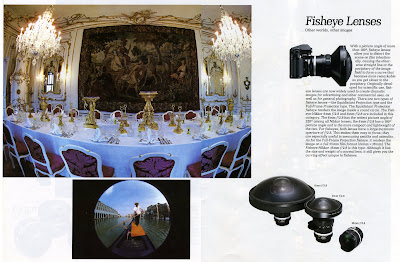
Fish-eye lenses have the most bizarre name of any lens! Some sources state that they are so-named because they bulge outwards like the eye of a fish, while others maintain that it is because their image is similar to the view of the world on land as seen by a fish underwater. Their field of view encompasses 180°, and no attempt is made to compensate for the distortion caused by trying to squeeze such a large angle onto a flat piece of film. As such, fish-eye lenses make for very distinctive photographs, which look as though they were being viewed on the inside of a curved surface.
Less powerful fish-eyes create a full-frame image, while those with very short focal lengths create a circle in the middle of the frame. Special fish-eye lenses can reach up to 270°, and sometimes beyond, but these are useful only for scientific purposes, or very wacky special effects.
Fish-eyes are normally in the range of 6mm to 20mm for 35mm cameras, and are prohibitively expensive. However, if you really must take a photograph of a 180° panorama in one shot, or if you really want some particularly bizarre special effect, a fish-eye lens is one of the very few things capable of the job!
ULTRA WIDE-ANGLE LENSES

Ultra wide-angle lenses seek to encompass huge fields of view with the very minimum of distortion. This is quite an optical feat, and invariably there is some difference between rendition of objects at the edge and centre of the film despite the best attempts of optical engineers.
Ultra-wides have the property of enhanced perspective. This is because it is very easy to get every object in a photograph in focus due to the huge depth of field4 which they afford, and since closer objects appear to dwarf the background.
Ultra-wides often have the same focal length as longer fish-eyes, around 16-24mm, and the longer ones are at least within the range of an amateur's budget. The maximum apertures of these ultra-wides does vary, but it's usually not more than f/2.8 since the difficulty in constructing these lenses would make a lens with larger elements very expensive indeed. Many photographers think that a 24mm is a very nice lens to use for some reason, probably since it's just that little bit wider than the more widely-available 28mm.
WIDE-ANGLE LENSES

Wide-angle lenses are a range of lenses which allow more into the frame than a standard lens, but are not so extreme as an ultra-wide or fish-eye. They are generally used for landscape photography, but they are suitable for pretty well any application.They share the huge depth-of-field inherent with wide lenses, though not to quite the same extent, and can also utilise similar perspective tricks.
They cover the range from 28-40mm, and usually come with a choice of maximum aperture in the most common lengths. A 35mm f/2 lens is quite expensive, however, when compared to a 35mm f/2.8, or even a 28mm f/2.8.
STANDARD LENSES
These lenses approximate perpective and proportion as seen by the human eye. They are optically simpler to produce than any other lens, though often they have large maximum apertures and this means they grow in complexity. They are cheap, suitable for use in low light, and up until recently, every photographer had one.
Standard lenses range from 40mm to 55mm depending on the manufacturer and model of your camera, though why exactly these values were chosen when 43mm is closest to the true value is something of a mystery! The biggest advantage of a standard lens is usually the maximum aperture, since they are optically quite simple to produce, and so f/1.4 is quite a common lens. However, lenses up to f/1, or more usually f/1.2 have been produced, and many amateurs prefer the slightly cheaper f/1.7 or f/2 lenses. However, if you got a lens with your camera, this would invariably have been it - until the popularisation of near-standard zooms.
TELEPHOTO LENSES
TELEPHOTO

MEDIUM TELEPHOTO

Telephotos are lenses that magnify distant objects and appear to bring your subject closer to you. They are generally said to have less depth of field and to compress perspective, and this is a relatively useful myth in that it approximates the truth as a photographer would see it. Of course, in mathematical terms both of these statements are total myths; apparent reduced perspective is simply caused because you're usually magnifying distant objects5, causing the apparent reduction. Similarly, were you to get sufficiently close to make a subject appear the same size in the frame with a shorter lens, the background would be equally out of focus.
These two qualities, however, lead us to the telephoto's primary application - portraiture. To take a full-face picture of someone with a wide lens results in severe distortion since their nose is so much closer to the camera than their other facial features. The increased camera-subject distance with a telephoto reduces this effect to the point of insignificance. The other helpful feature is the apparently reduced depth of field; an unsightly background can be rendered out of focus with ease, and so does not distract from the subject.
The usual quoted range for telephotos is 55-200mm. These range from those capable of only slight magnification (85mm, and so on), through the 'portrait lenses' of 100-135mm, and right up to those capable of three or four times the magnification to which the human eye is accustomed (150-200mm). Maximum apertures vary, with the possibility of obtaining an 85mm f/2 not being too remote, but shrinking increasingly toward the end of the range. A 200mm f/4 would be considered 'normal', though for extra cost, most of these lenses can be obtained with larger maximum apertures.
MACRO LENSES
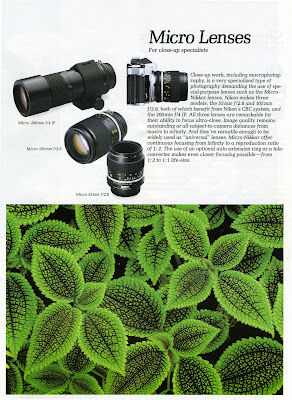
A macro lens is designed to take photographs of very small subjects at magnifications which would be inconceivable with 'normal' lenses. They achieve this by allowing the lens to move further away from the film plane, allowing objects to be focused on which are significantly closer to the camera than would usually be possible. However, this extra movement makes the lens harder to construct. Macro lenses are convenient, compact and easy to use, but don't provide the magnification which can be found from bellows or extension tubes.
A macro lens is not strictly confined to any specific focal length, but they are most commonly somewhere between 50 and 200mm. Most have a slightly smaller maximum aperture than their telephoto counterparts, and are somewhat more expensive.
Are macro and micro the same thing? Find out HERE.
SUPER TELEPHOTO LENSES

If you really need to get pictures of a subject, but can't get very close, what you need is a super telephoto lens. The minimum length for a lens on a safari, for example, is often quoted as 300mm, and surveillance photography can require 1000mm lenses, which are quite capable of resolving detail utterly invisible to the naked eye.
These lenses can be absolute beasts, weighing kilograms and being up to a metre in length. They compress perspective to a serious extent, and have only a very small depth of field. The slightest wobble of the camera can result in blurring the photograph beyond recognition. However, while they have impracticalities, they are wonderful lenses and are so good at the job they do that many photographers put up with or learn their way around these problems.
Super telephoto lenses range in length from 200mm to the very limits of practicality, which normally lie at about 1000mm. Maximum apertures are normally quite small, ranging from f/4 at the lower end of the range to perhaps only f/8 (quite dark, in fact) at the other end of the scale. These lenses range from reasonable in cost to utterly bank-breaking, but if you need one, they are an invaluable asset.
ZOOM LENSES
TELEPHOTO ZOOM

SHORT ZOOM

In earlier eras, so-called 'prime'7 lenses outclassed zooms to such an extent that they were seen as fripperies. However, with significant advances in optical technology and consumer demand for all-singing, all-dancing lenses, the zoom has jumped in to fit the bill.
A zoom lens has a variable focal length, which is easily adjusted by lens movement. Any focal length in the range can be employed. They have a number of advantages: subjects can be precisely framed using focal lengths that wouldn't normally be available in prime lenses (such as 127.33mm, if you were taking a portrait at a certain distance; where perhaps only 120mm and 135mm primes are available, a 70-200mm zoom would cover the entire range steplessly), there is no need to move yourself or the subject, they are generally lighter than an equivalent range of primes and can be used for a number of interesting effects using long exposures and zooming during these.
However, some dislike zooms because they are heavier than a single prime lens, have a smaller maximum aperture and the quality may be lower. While issues of quality have been largely resolved, the other two points are fair ones; a particular gripe of purists is that many cameras are sold with 'standard zooms' with maximum apertures of perhaps f/2.8 or f/3.5, where a fixed-length f/1.4 lens would have been sold in the past - no prizes for guessing which is the most versatile in low light.
If there's a type of lens listed here, there's almost invariably a zoom to cover it. Wide 20-35mm zooms, 35-70mm 'standard' zooms, 70-210mm zooms (a very popular lens), and even 135-600mm ultra-telephoto zooms... However, buying one of these lenses does require you to weigh up the pros and cons; if you want optimum quality, to be able to work in low light, or a particularly light lens of a relatively specific focal length, the prime lenses are your best choice. Otherwise, join the many who believe that the versatility a zoom provides cannot be matched by the benefits of 'olde-worlde' fixed-focus lenses!
OTHER LENSES
MEDICAL & TELECONVERTER LENSES

CATADIOPTRICS LENSES
For those with a desire to take photographs of distant objects but no desire to break their back, or their bank, through the purchase of a super-telephoto, the solution lies in a catadioptric lens6. These use mirrors to bend the light such that it travels two, three, or perhaps even four times the length of the lens barrel, thus effectively allowing you to cram a long lens into only a tiny portion of the space required for a telephoto. They're lighter, cheaper, and often suffer from less optical distortion than telephotos, since mirrors are not so prone to that kind of thing as lenses.
However, before you rush out and buy one of these 'perfect solutions', there is one factor to consider. They have a fixed, and usually quite small aperture. This is extremely limiting in photographic terms, despite what you may think, and means that exposure must be altered using dark and light filters as necessary. It also renders them useless except on bright days, when sufficiently fast exposures can be achieved to ensure that camera shake is not visible. A tripod is a partial solution, but there's still the risk of subject movement! Catadioptric lenses can increase potential focal length to 2000mm, but a more common lens, a 500mm f/8, is found in many photographers' kit bags.
RULES OF THUMB
Lenses of a longer focal length tend to make subjects appear larger at a given distance, have a smaller apparent depth of field, and compress perspective to a greater extent.
Longer focal length lenses also require faster exposures to prevent blurring due to camera shake. A general rule for 35mm is that the lowest speed at which you can hand-hold a lens is 1/focal length - so a 500mm lens cannot be hand-held below 1/500 of a second. Blurring can be prevented by using a tripod, should a lower speed be required.
CONCLUSION
There is a very wide range of lenses on the market today. Some are ridiculously expensive, others serve little practical purpose, but all have their niche. If you want to get a camera kit, then the only advice that can be given is to choose the lenses which you will find most useful for what you want to do, and also, don't take this entry as gospel - it's all true, but there's no substitute for looking at photographs to see what can be achieved with lenses of different focal lengths so you can make your decision!
******************************************************************
LENS TYPES
Trying to decide what lens you want to buy can be confusing. Adding to that confusion is the array of mystery letters in a lens's description. Each of these letters is important in understanding the specifications of the lens. Some of the letters are brand specific but some are fairly standard across brands.
ED
Extra-low Dispersion - This means that the lens has very little color shift when focusing. Colors don't always focus at the same point (think 3D glasses). ED lenses are designed to minimize this problem and reduce the color fringes sometimes seen around photographic subjects. One of the most common fringes is purple (combination of out of focus red and blue) and this purple fringe degrades image sharpness.
IF
Internal Focus - This means that instead of the lens rotating and telescoping as it focuses, the focusing action is done inside the lens. This leads to a more compact and quick lens.
IS
Image Stabilization - This is the technology used to allow for hand-held images as slow shutter speeds. It basically allows the internal workings of the lens/camera to match the motion of your body so as to counteract them. Some brands place IS technology in their camera bodies but other brands place the IS technology only in certain lenses.
MACRO
Macro - Macro lenses are lenses where the optics allow for high magnification of subjects. "True" macro lenses record the image at the same size as it appears in real life. This is a 1:1 macro. Not all macro lenses are actually "true" macros. Some produce much less magnification than 1:1.
USM
Ultrasonic Motor - This is a special type of motor within a modern autofocus lens that allows for extremely quick focus shifts with very little sound.
*******************************************************
*******************************************************
FOCAL LENGTH
Click on each picture for a larger view of that lens and the corresponding FOCAL LENGTH.

*******************************************************************

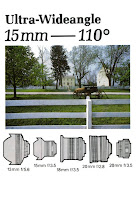
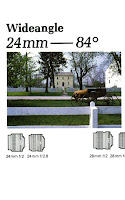
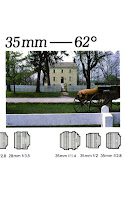
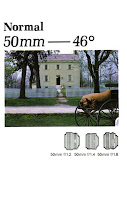
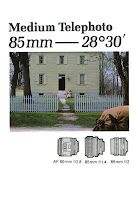
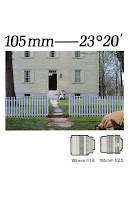

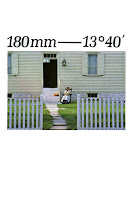
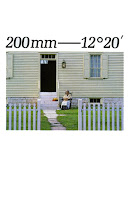


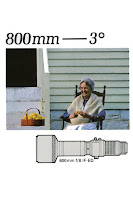
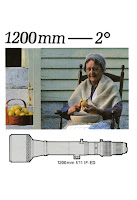
****************************************
Here's a clickable example of FOCAL LENGTH.
****************************************
DEPTH OF FIELD
UNDERSTANDING DEPTH of FIELD: TWO VIDEOS
******************************************************************
A FEW SITES FOR REFERENCE:
Wiki: Photographic Lens
Wiki: Photographic Lens Design
Photographic Lens Tutorial (for the Scientist in you ;)
Lensplay.com
Photo.net (Making Photographs with Lens)
Photographycourse.net (Lenses)
Photo.net (Optics)
An article on lenses.
FAQ's on Lenses
Bokeh
PhotographyLensesBlog.com
Iceland. Greenland. Reykjavik. Nome. Siberian Yupik.
02 October 2013
30 September 2013
PROJECT #7: DIRECT LIGHT From the side
DIRECTIONS: Take 10+ photographs that contain an object/person/thing, and the distinct dark shadow of that object.
DIRECT LIGHT creates a distinct dark shadow from whatever object is being lit. Whenever you observe distinct dark shadow you are observing "direct" light. Direct light is useful for creating mood and atmosphere in a photograph.
DIRECT LIGHT creates a distinct dark shadow from whatever object is being lit. Whenever you observe distinct dark shadow you are observing "direct" light. Direct light is useful for creating mood and atmosphere in a photograph.
Subscribe to:
Comments (Atom)








